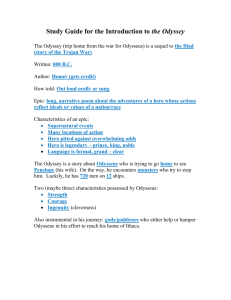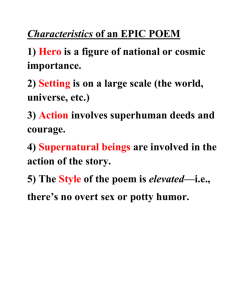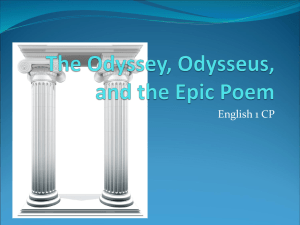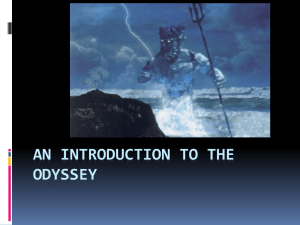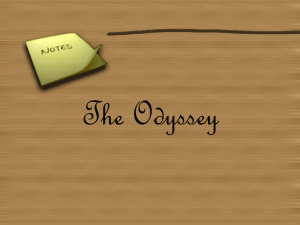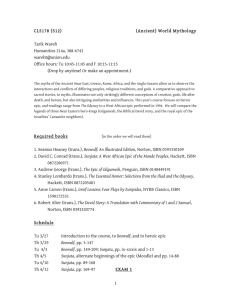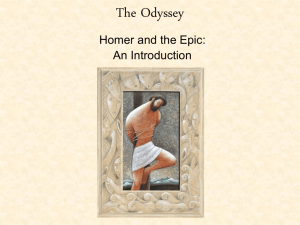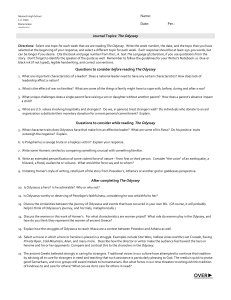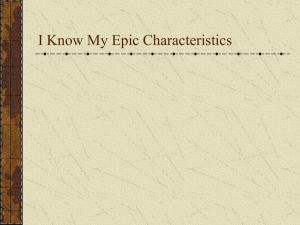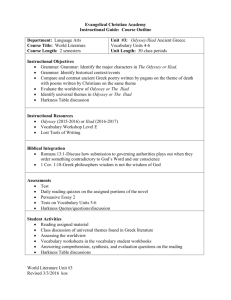Homer's Odyssey: Plot, Characters, and Literary Analysis
advertisement
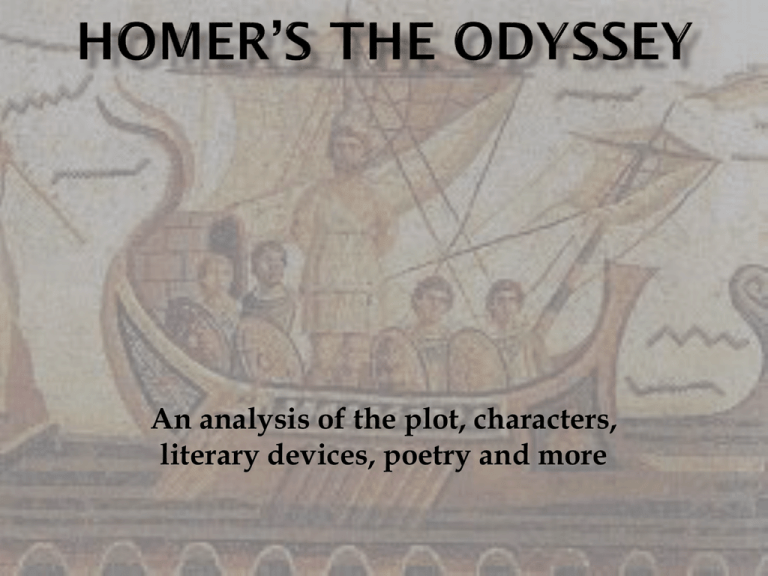
An analysis of the plot, characters, literary devices, poetry and more Though no one really knows who Homer was, he is credited as the author of both The Iliad and The Odyssey. He is said to have been a blind poet who lived near the eastern Aegean sea. It is also commonly accepted that both The Iliad and The Odyssey were sung by bards (poets) until he wrote them down. Homer’s The Odyssey and The Iliad are considered to be the basis of Greek and Roman Education. Before “The Odyssey”, Homer wrote “The Iliad” which told the story of the Trojan War. The character Odysseus left his home to fight in the war. The Trojan War was waged against the city of Troy by the Achaeans (Greeks) after Paris of Troy took Helen from her husband Menelaus, the king of Sparta. "The Iliad" relates a part of the last year of the siege of Troy. It contains the morals and values Greek society held in war. The Odyssey is an Epic poem composed between 700 b. c. and 1000 b. c. It tells the story of Odysseus and his journey home from the Trojan War. The Odyssey is seen as a metaphor for living one’s life. It contains the morals, themes and values of the Greek society, adventure, hardship, and life. Composed in elevated language, the meter is “dactylic Hexameter” The ideal dactylic hexameter consists of six (hexa) metrons or feet called dactyls (fingers). Each dactyl consists of three syllables, the first long, the other two short. The last foot is not a real dactyl, as it only consists of two syllables -U|-U|-U|-U|-uu|-- Down in a | deep dark | hole sat an | old pig | munching a | bean stalk | Allusion Alliteration Assonanse Consonance Hyperbole Metaphor Extended metaphor Onomatopoeia Oxymoron Paradox Personification Simile Symbol Pun Epic poetyr Epic hero Epic simile flashback poetic justice Epithets catalogues and digressions Hero Epic hero Epic invocation Epic conflict Epic war Epic intervention of the gods The Odyssey consists of 24 books within the epic poem, these are his adventures, in which he learns significant lessons: I. II. III. IV. V. VI. VII. VIII. IX. X. The Coast of Cicones The Lotus Eaters The Cyclops Aeolus sends Odysseus off with a bag of wind Having wasted the wind, Aeolus casts them out calling them cursed by the gods. Laestrygonians: the cannibals Journey to the land of the dead to consult Tiresias The Sirens Scylla and Charybdis The Cattle of the Sun God I. II. III. IV. V. VI. VII. VIII. The return of Odysseus Argus The Suitors Penelope The Challenge Odysseus’ revenge Penelope’s test The ending The Thematic Structure of Odysseus' Wanderings (in progress) Troy war Ciconia, rounds Malea war Lotus Eaters memory 1 Cyclops cannabalism, loss of civilization, kleos 2 Aeolus storm, mutiny 3 Laestrygonians cannabalism, monstrous female 4 Circe controlling female, loss of humanity, divine warning 5 Hades 6 Circe helpful female, divine warning 5 Sirens memory 1 Scylla and Charybdis loss of humanity, kleos 2 Cattle of Helius storm, mutiny 3 Scylla and Charybdis monstrous female 4 Calypso controlling female, loss of humanity, divine warning 5 Scheria helpful female. hyper-civilization 5, 2 Ithaca war, controlling female
